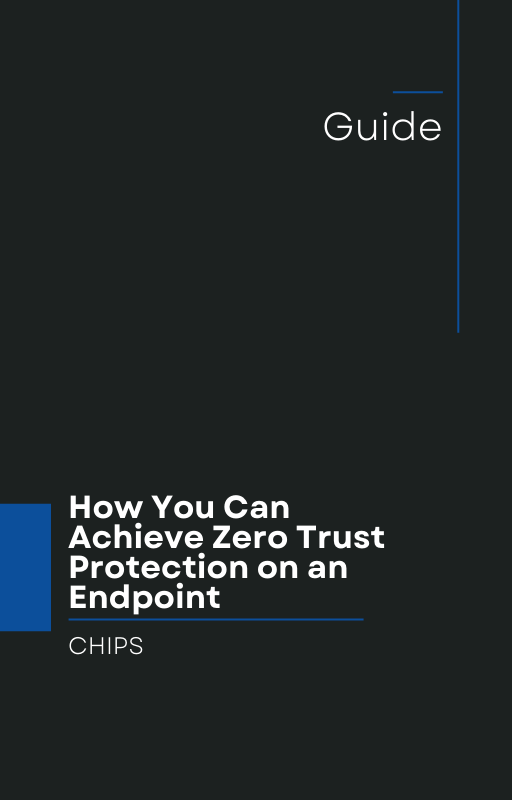Cyber-threats are evolving—and fast. A recent investigative report by The Hacker News highlights how the adversarial tool known as Rhadamanthys Stealer has grown far more sophisticated. The Hacker News
Here’s a breakdown of what happened, why it matters to every business owner, and why it’s time to rethink your endpoint strategy—from “detect and respond” to “isolate and contain.” As a proven solution with a decade of success, the endpoint protection platform AppGuard is one key piece in making that shift.
The incident: What the stealer can now do
According to the report:
-
Rhadamanthys is offered as a malware-as-a-service (MaaS) tool, with tiered subscription pricing from the threat actor.
-
The new version (0.9.2) adds device and browser fingerprinting—collecting details about the host machine, the browser, possibly even hardware identifiers.
-
It uses PNG steganography to conceal its payload inside images (or other media like WAV/JPEG) and then extracts, decrypts and launches malicious code.
-
It does sandbox-detection, environment checks, obfuscation of modules, and has a built-in Lua runner for plugins. It’s designed to avoid detection.
-
This isn’t a kitchen-sink malware from an amateur—it is marketed professionally, with branding, pricing, support tiers. The adversary is playing business.
In short: the threat landscape is shifting from script-kiddie attacks to highly professionalized, persistent malware services. This means any business endpoint—desktop, laptop, remote user device—can be a runway for this kind of tool.
Why this matters for business owners
Let’s pull out some implications for you as a business owner, CIO/IT-lead, or security decision-maker:
-
Traditional detection is no longer enough.
If malware can hide inside image files, bypass sandboxes, fingerprint the device, evade detection, then relying solely on antivirus, signature-based detection or even endpoint detection & response (EDR) is risky. -
Time-to-contain is critical.
Even if you detect an intrusion after the fact, the damage may already be done—data exfiltration, lateral movement, system compromise. It’s better to stop the malicious behavior early rather than chase after it. -
Attackers are professionalizing.
The Rhadamanthys case shows malware offered like a commercial product. That means the attackers have business-model discipline: resilience, support, updates. Your defenses must match that maturity. -
Endpoint is a critical battleground.
You may have invested heavily in firewalls, cloud security, identity and access management—and those are vital. But if an endpoint device is compromised with advanced stealer malware, then your perimeter becomes irrelevant.
From “Detect & Respond” to “Isolate & Contain”
Many organizations still think of endpoint security as: detect when something bad happens, and respond (investigate, remediate, patch, cleanse). That model has significant gaps: what happens during the window between intrusion and response? What damage is done while you’re reacting?
The shift: isolation and containment. Here’s what that means in practice:
-
Prevent malicious processes from executing (instead of waiting for signature or anomaly detection).
-
Block unauthorized behaviors at the endpoint (even if malware is unknown or uses novel techniques like steganography).
-
Contain the device or process in a way that lateral movement or data exfiltration is stopped immediately.
-
Minimize dwell time and blast radius rather than chasing the attacker after the fact.
That mindset change—from “I’ll find it, and then clean up” to “I’ll stop it happening in the first place”—is what separates organizations that survive a breach from those that struggle.
Why AppGuard is the right tool for this moment
Let’s talk about how AppGuard (now available for commercial use) delivers exactly the kind of endpoint defense needed in this evolving landscape:
-
AppGuard has a 10-year track record of success protecting governmental, enterprise, and mission-critical endpoints. That level of maturity means you’re not buying a “new shiny toy” but a proven solution.
-
It uses a fundamentally different approach: rather than primarily relying on signatures or heuristics, AppGuard prevents unauthorized processes and behaviors by enforcing strict execution controls and isolation.
-
Against a threat like Rhadamanthys, which uses steganography and environment detection, AppGuard’s isolation strategy ensures that even if the malicious code lands, it cannot execute or spread.
-
Because AppGuard focuses on prevention and containment at the endpoint, it reduces reliance on “detect later” tools and thereby shortens or eliminates dwell time.
-
For businesses that must protect sensitive data, maintain compliance, secure remote endpoints, reduce risk—even when budgets are under pressure—AppGuard offers a compelling ROI by reducing incident costs and business downtime.
Practical steps your business should take now
If you’re reading this and thinking “We’re vulnerable”, here are immediate actions to consider:
-
Audit your endpoint risk. How many devices access your network? Are your remote/field endpoints protected? What is your current toolset for endpoint protection?
-
Review your endpoint strategy. Are you relying primarily on detection and response? Or do you have controls in place that isolate and contain endpoints proactively?
-
Evaluate AppGuard. Bring in AppGuard into your security architecture—assess compatibility with your environment (Windows, macOS, remote endpoints). Look at what changes it will bring to your operational procedures.
-
Deploy with policy-based isolation. Configure AppGuard to enforce least-privilege execution, isolate unknown or high-risk processes, and automatically contain incidents rather than waiting for the alert.
-
Train your team. Shift mindset from “we’ll find it” to “we block it before it causes harm”. Security operations, IT support, and endpoint teams all must understand the new paradigm.
-
Monitor, measure, iterate. After deployment, measure reductions in incidents, dwell time, and endpoint risk. Use those metrics to drive further improvements.
The bottom line
The evolution of the Rhadamanthys Stealer is a wake-up call. Malware is no longer unsophisticated; it is stealthy, professionalized, and built to evade traditional detection techniques. The Hacker News
If your endpoint security strategy still leans heavily on “detect then respond”, you are leaving a window of opportunity for attackers. Instead, shift toward “isolate and contain”. Use solutions like AppGuard that focus on preventing execution, limiting damage, and driving down dwell time.
Call to Action
If you’re a business owner or IT leader, now is the time to act. Let’s talk. We at CHIPS are ready to help you move beyond detection and response, and adopt a true isolation strategy with AppGuard. Let’s protect your endpoints, secure your sensitive data, and reduce your risk. Reach out today—let’s get started.
Like this article? Please share it with others!

October 21, 2025

Comments